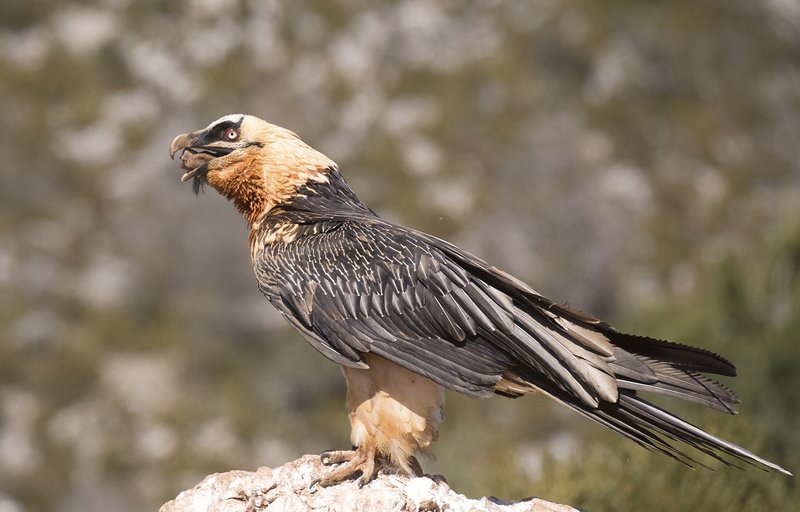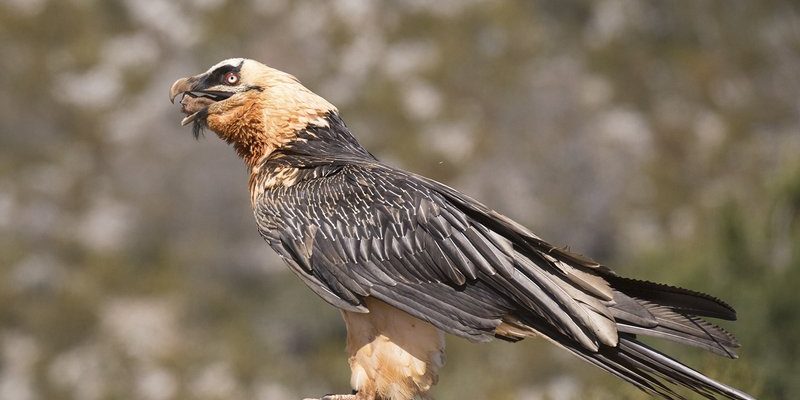
Imagine a creature soaring high above rugged mountain landscapes, its wings casting a shadow over ancient cliffs. The Bearded Vulture, or Gypaetus barbatus, is not only an incredible flier but also a master of scavenging—particularly when it comes to bones. Yes, you heard that right! This bird’s diet is as unique as its looks. Let’s dive into the history and evolution of the Bearded Vulture, tracing its roots and understanding why it holds a special place in our world today.
The Origins of the Bearded Vulture
The Bearded Vulture is often considered a living fossil. Its evolutionary roots can be traced back millions of years, often putting it alongside other ancient birds of prey. Fossil evidence suggests that ancestors of the Bearded Vulture roamed the earth during the late Miocene epoch, around 6 to 12 million years ago. Over time, these birds adapted to various habitats in the mountainous regions of Europe, Asia, and Africa.
You might be wondering why it’s called the Bearded Vulture. The name comes from the distinctive beard-like feather markings that hang down from its chin, giving it an almost mystical appearance. These features are not just for show, either; they play a role in communication and mating displays, much like a human would use fashion to express individuality.
Interestingly, the Bearded Vulture is more closely related to other scavengers than to typical eagles or hawks. This connection reveals that it evolved to thrive in different ecological niches, proving that survival often leads to unexpected adaptations.
Physical Characteristics That Set It Apart
When you see a Bearded Vulture, the first thing you might notice is its impressive wingspan, which can reach up to 10 feet. This wingspan allows it to soar effortlessly across vast mountain ranges. The bird’s plumage is equally striking—vibrant orange from head to tail, with dark wings and the iconic “beard” of feathers beneath its beak.
But there’s more to its appearance than meets the eye. The Bearded Vulture has unique adaptations that make it an expert bone-crusher. Its strong, hooked beak is designed to snap bones, allowing it to access the nutritious marrow inside. This ability not only helps it survive but also has significant ecological impacts, as it helps dispose of animal carcasses in its environment.
Moreover, their coloration, especially the orange hue, isn’t just aesthetic. It’s due to a high intake of iron-rich bones, which are ground into a powder they ingest. You could say they’re nature’s recyclers, turning what would be waste into a source of nutrition and survival.
Behavioral Traits: Life in the Sky
The Bearded Vulture is a master of the skies, displaying incredible aerial skills while searching for food. You might catch one soaring at high altitudes, using thermal updrafts to conserve energy during long flights. They cover vast areas, sometimes flying hundreds of miles in search of their next meal.
Their feeding behavior is as interesting as their flight patterns. The Bearded Vulture is known for its spectacular bone-dropping technique: it picks up bones high in the air and drops them onto rocky surfaces to break them apart. This fascinating method allows them to access the marrow, a rich source of fat. It’s like a chef preparing a meal with a creative twist!
When it comes to social behavior, Bearded Vultures are mostly solitary, but they do pair up during the breeding season. These birds are monogamous, forming long-term bonds with their mates. They work together to raise their young, often returning to the same nesting sites year after year. This dedication not only strengthens their partnership but also fosters stability within their population.
Conservation Efforts: A Fight for Survival
Sadly, the Bearded Vulture’s story isn’t all bright skies. In recent decades, their populations have declined significantly due to habitat loss, poisoning, and hunting. Conservationists have rallied to address these issues, implementing various programs aimed at protecting this unique bird.
One successful effort has been the establishment of breeding programs in captivity. These programs aim to increase the Bearded Vulture population and reintroduce them into their natural habitats. By working with local communities to raise awareness and promote sustainable practices, these initiatives have seen some positive results.
Additionally, protected areas have been designated to ensure these birds have safe spaces to nest and feed. Honestly, it’s a reminder of how essential it is to preserve our natural world. Every little effort counts, especially for a species that plays such a crucial role in its ecosystem.
Fascinating Myths and Cultural Significance
The Bearded Vulture has captured the imagination of various cultures over the centuries. In many regions, it’s been viewed as a symbol of strength and freedom. For instance, in certain myths, the Bearded Vulture is often associated with the gods or seen as a guardian of the mountains.
In some traditions, people believe that the feathers of the Bearded Vulture hold magical properties. They are used in rituals and ceremonies, often symbolizing protection and bravery. This cultural significance underscores the deep connection humans have with these magnificent birds.
Furthermore, it’s interesting to note how the Bearded Vulture plays a role in folklore. Stories abound about its prowess and mystical qualities. These narratives serve as a bridge between humanity and nature, reminding us of our shared existence.
The Future of the Bearded Vulture
Looking ahead, the future of the Bearded Vulture hangs in the balance. While conservation efforts are underway, ongoing habitat degradation poses a threat to their survival. You might be wondering what else can be done. It starts with a commitment to preserving the ecosystems in which they thrive.
Public education plays a critical role in this process. By raising awareness about the Bearded Vulture and the issues it faces, we can inspire others to take action, whether that’s through supporting conservation organizations or simply sharing what they’ve learned.
Every individual effort counts. The more we know about the Bearded Vulture, the better equipped we are to protect it. As we head into the future, let’s hope that this remarkable bird continues to soar high above the mountains, a testament to the resilience of nature.
In conclusion, the Bearded Vulture is more than just a bird; it’s a symbol of adaptability, strength, and ecological importance. Its journey through time showcases the beauty of evolution and the ongoing fight for survival. Let’s work together to ensure that this magnificent creature remains a part of our world for generations to come.

